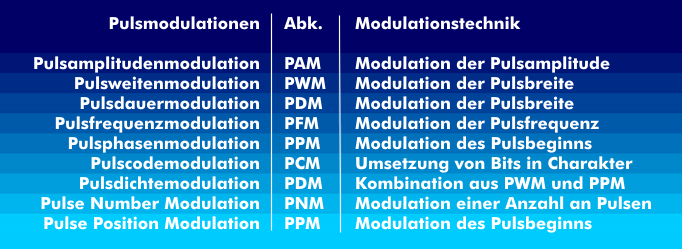pulse modulation
Pulse modulation techniques are essentially the same as classical modulation with the difference that the carrier signal is not a sinusoidal signal but a pulse or square wave signal.
With a pulse, its width, duration, amplitude, phase and frequency can be modulated. Accordingly, the pulse modulation techniques are called pulse width modulation, pulse duration modulation, pulse amplitude modulation, pulse density modulation, pulse phase modulation and pulse frequency modulation. In addition to the basic methods mentioned, there are also some combined methods.
Since pulse modulation methods work with a pulse-shaped carrier signal, the spectral behavior is determined by its Fourier transform. This means that in the frequency representation, many harmonics are formed in addition to the fundamental wave. If such a carrier signal is amplitude modulated with a modulation spectrum, then the fundamental wave and all harmonics are modulated with the modulation spectrum.


_en.png)